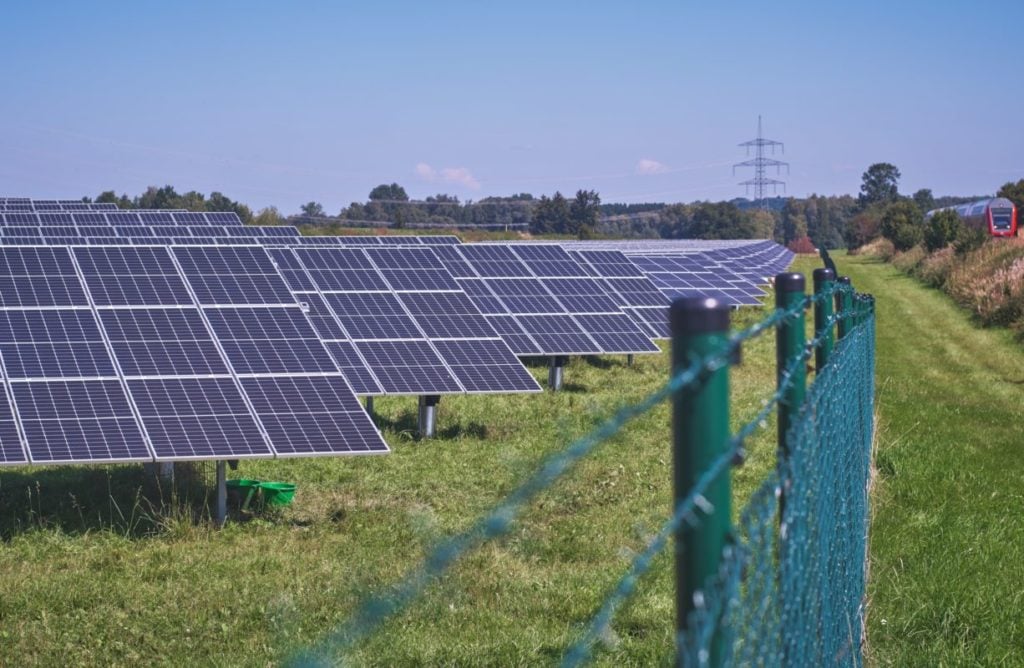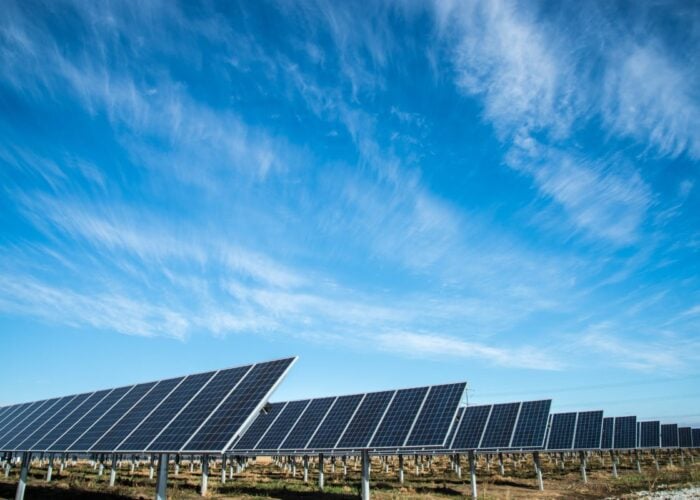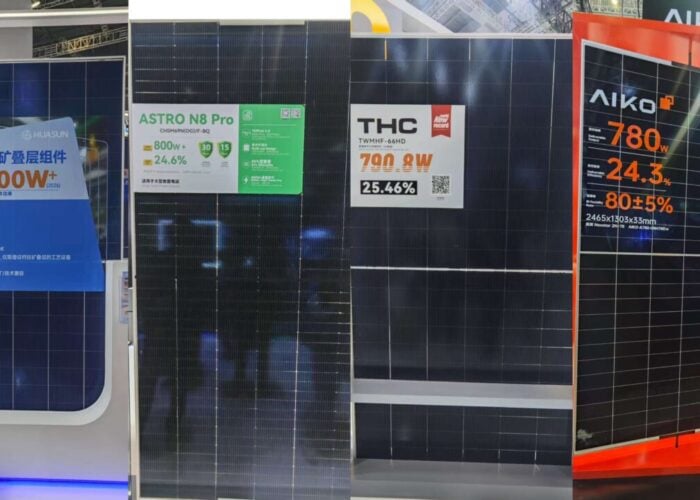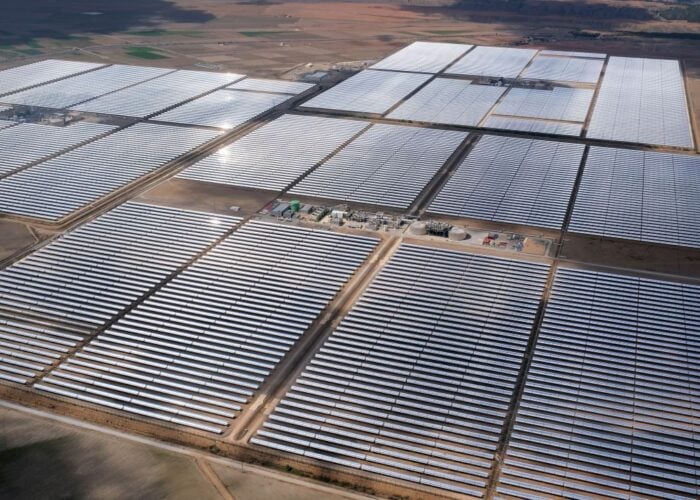
Falling solar module prices in recent years mean it can be beneficial to oversize the DC capacity in PV plants. John Leslie of BTY presents findings from a study that suggests developers should, in certain cases, investigate using higher DC/AC ratio designs.
PV solar facilities have long been designed using an industry-standard DC/AC ratio of 1.2. A number of articles have recently started to re-examine this issue, and over the past few years a growing number of facilities have been constructed with higher ratios. We examined the hypothesis that due to steadily decreasing module costs the optimum DC/AC ratio may be much higher than 1.2, and that based on economics alone, it is closer to 1.6 or even higher.
Unlock unlimited access for 12 whole months of distinctive global analysis
Photovoltaics International is now included.
- Regular insight and analysis of the industry’s biggest developments
- In-depth interviews with the industry’s leading figures
- Unlimited digital access to the PV Tech Power journal catalogue
- Unlimited digital access to the Photovoltaics International journal catalogue
- Access to more than 1,000 technical papers
- Discounts on Solar Media’s portfolio of events, in-person and virtual
This could have important financial benefits for developers repowering underperforming sites, or for new AC-constrained sites trying to maximise financial returns. It also could have huge implications for projects in deregulated power markets, where power pricing fluctuates significantly during the day and any additional power produced due to extra DC capacity in the late afternoon at high power prices could make a huge impact on project economics.
In the early days of solar power development, the high price of panels relative to the overall project cost dictated that system designers had to be judicious with the sizing of the DC side of the facility relative to the AC output to the grid: when panels cost C$5 (US$3.69) per watt there could be no waste. Steadily dropping panel prices over the last 10 years (recent supply chain disruptions and tariffs notwithstanding) have led to a situation where it can be beneficial to grossly oversize the DC capacity and where the trade-off between higher capital costs in return for that additional power to the grid is worth it.
Methodology
For this desktop study we chose a 1MWdc, 1MWac design as the “base case”. We based our study in southern Alberta, Canada, a good solar resource with long sunny days in the summer, and cold but sunny days with frequently snow-covered ground in winter. Alberta is currently the hot spot for renewable energy projects in Canada, with many large projects under construction. Alberta also has a deregulated power market, where intraday power pricing in the summer can often exceed C$140/MWh. For the study we used a standard 30-degree fixed-tilt ground-mount design, with mono-facial 400W rated panels and 100kW capacity string inverters. Row spacing and all other aspects of the design could be considered typical. We used a relatively small site simply to expedite energy model processing time: our results should directly translate to utility-scale facilities.
We then prepared an energy model using Helioscope software for the site using soiling parameters for the region (i.e. – snow accumulation) and typical site losses. We estimated the capital cost, yearly operating and maintenance (O&M) costs, and estimated the levelised cost of electricity (LCOE). We also calculated 25-year net present value (NPV) for the project, assuming historically average power pricing for the region and included greenhouse gas (GHG) credits at C$40 per eCO2 tonne.
We then increased the DC side by 200kW increments for each case, keeping everything else constant (i.e. – holding AC capacity at 1MW). In other words, subsequent cases had DC/AC ratios of 1.2, 1.4 and so on up to 2.6. For each case we re-estimated the capital and O&M costs, LCOE and NPV. We used industry-standard principles to estimate soft costs such as design, permitting and project management as the DC side (but not the AC side) of the project steadily increased. Panel and racking costs were increased in proportion to DC capacity but other costs were factored based on estimating convention (i.e. – design costs for a 2MW site may only be 15-20% more than the 1MW base design).
Before we dive into the results and our findings, we should note some important disclaimers:
- Not a field exercise – desk study only
- We are following up on an actual rooftop case we are involved with (1.8-2.0 ratio) regarding any long-term O&M issues, such as increased inverter failures or hot spots
- We are in discussion with inverter suppliers to determine their comfort level with these designs and discuss any warranty exclusions
- And lastly, keep in mind the purpose of this exercise was not to create a new design edict, but simply to get people rethinking project design, especially where high power prices prevail or where battery storage could be added
Results
First-year energy production is charted against the design DC/AC ratio for each case. As the DC side is increased site output also increases but with diminishing returns, as one would expect. Keep in mind actual output to the grid is at all times limited to 1MW; all we are doing by increasing DC capacity is increasing the time that the site produces at maximum power. By oversizing we are able to facilitate more time at maximum power even on cloudy days, and get to maximum power faster in the morning and stay at that level longer late in the day as the sun starts to set.
But, as the DC side increases more and more power is lost. At DC/AC ratio of 1.4 losses due to inverter clipping are around 3% but rise to almost 20% at a design ratio of 2.0. Keep in mind that all results are based on energy model software and there could be limitations in the software algorithms at very high ratios; actual clipping losses could be higher or lower in real life.
We also calculated the 25-year NPV for each case (graph 3). This analysis is slightly different from the widely used LCOE, because it considers actual power pricing. We also included the revenue from GHG credits (i.e. – the credit for displacing grid power generated from burning fossil fuels with that generated using GHG-free solar power). We used C$40 (US$29.8) per tonne eCO2, the prevailing price of carbon in Canada, and escalated it annually according to regulations in place. What carbon pricing will be in the future and how it can be monetised is difficult to predict, and varies enormously depending on each location, but more and more, developers are realising that it needs to be considered in a project’s economics.
Interesting to note that when actual power prices and carbon prices are included, the optimum design ratio at least on paper is closer to 1.8.
Using the NPV template, we also investigated the impact of higher power prices on optimum design ratio. Results are shown in the graph below. Again, not surprising that as power priciness climb, the revenue generated from the incremental power produced more than offsets the higher capital cost and pushes the optimum design ratio higher and higher. Again, we stress that this is a desktop exercise and are not necessarily recommending design at these ratios, but it is probably safe to say steadily increasing power prices in most places will continue.
Conclusions
Our results clearly indicate that in certain cases developers should investigate using higher DC/AC ratio designs. While each site and region is different, our study indicates that a thorough investigation of the financial benefits of using a higher DC/AC ratio should be considered. We feel this has particular significance for sites in deregulated power markets, where much higher power prices often prevail in the late afternoon, and for repowering underperforming AC-constrained sites. These results also could be particularly valuable for projects coupled with energy storage, where depending on the configuration additional power generated can be stored and released to the grid as demand and pricing dictate.
We also replicated the study for a location with a poor solar resource (Ireland) and the results indicated that overbuilding DC may be even more beneficial at locations where output is often limited by heavy cloud cover, such as Ireland, the UK and Northern Europe.
Next steps
This study was desktop only and left many real-life questions unanswered, primarily the impact of inverter performance at higher DC/AC ratios. Many inverter models may have limitations at higher ratios, and long-term impact on O&M costs and reliability need to be evaluated.
Other ideas to be examined in future studies:
- All costs were based on in-house estimates; working more closely with equipment suppliers and an EPC contractor could provide more confidence in the results
- More granularity is needed to evaluate the impact of incremental output versus intraday power pricing
- Study should be repeated for sites coupled to energy storage
- The impact of carbon pricing needs to be evaluated further, particularly scenarios where future carbon pricing is significantly higher than today
- Impact of single-axis trackers and bifacial panels. We replicated the study using single-axis trackers and the preliminary results mirrored the fixed-mount outcomes but further work needs to be done
- Benchmarking the performance of actual sites long-term. We are working with a developer repowering a number of rooftop facilities on a big-box store chain, where ratios around 1.8-2.0 are replacing the original design that were closer to 1.1-1.2. The first of the new layouts were commissioned last year and we are tracking site performance to obtain real-life data on the O&M costs and inverter reliability
In particular we want to investigate the impact of actual intra-day power pricing on the results. Our next step is to estimate what portion of the extra power generated by moving to a higher DC capacity occurs at higher power prices, thus making the impact of higher DC capacity even more beneficial. Our preliminary estimate indicated that the roughly 70% increase in energy produced from using a 2.0 design ratio compared to the 1.0 ratio base case was rewarded with a 157% increase in revenue. This result certainly reinforces the incentive to further study this issue – stay tuned!
Author
John Leslie is a senior technical specialist with BTY Group specialising in PV solar, energy storage and district energy facilities. He has been involved in the solar industry since 2013, primarily acting as independent engineer for lenders and equity providers for new and existing solar projects. BTY is an award-winning professional consultancy providing complete project solutions on energy and infrastructure projects including planning, development, operations and transactions.







